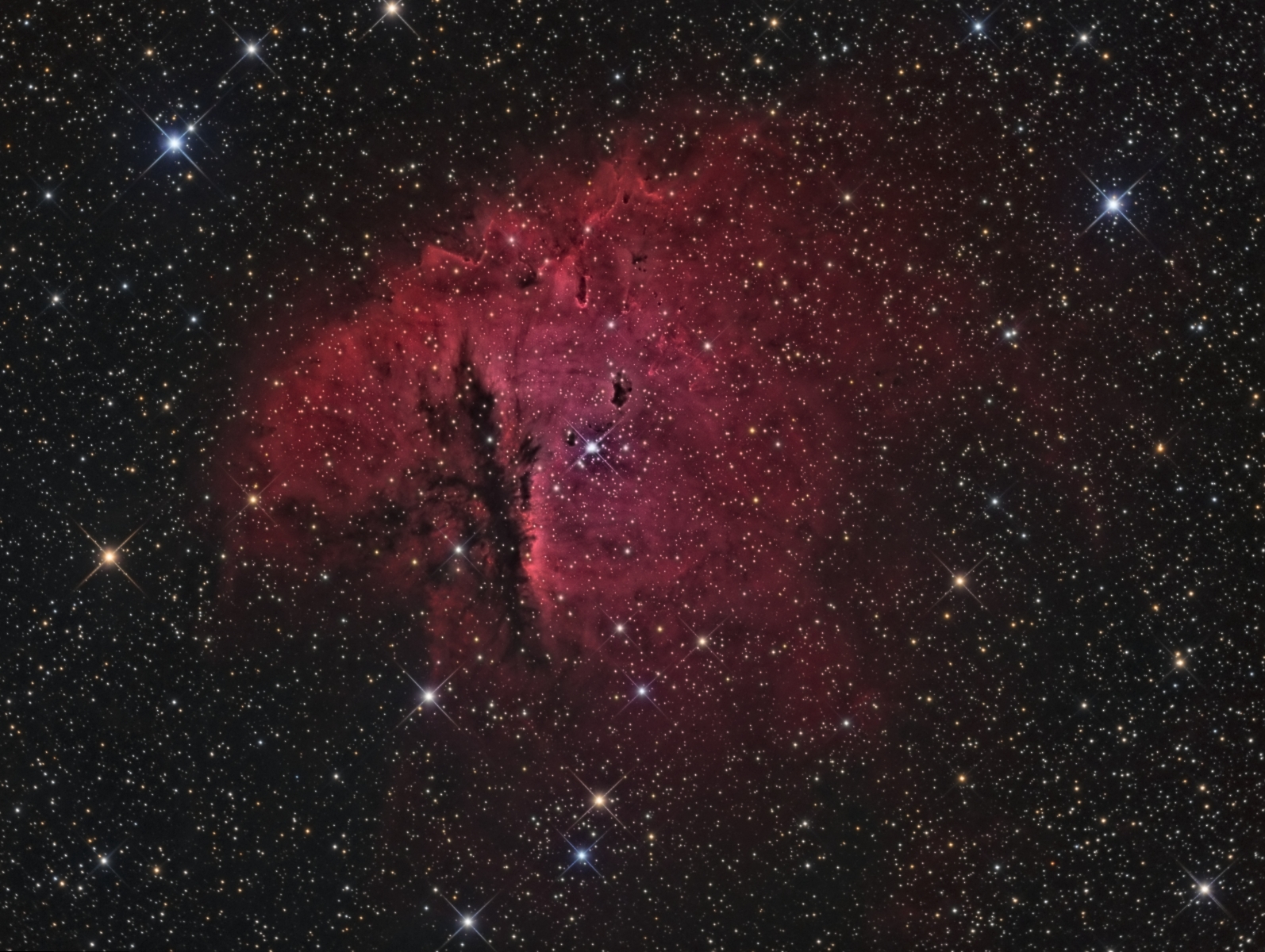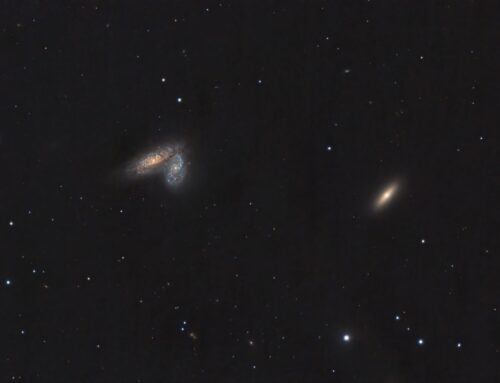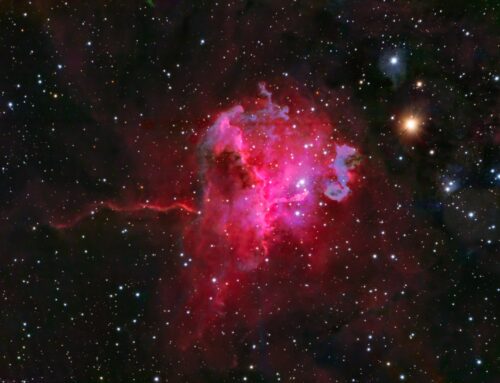NGC281, The Pacman Nebula (Colour)
Click image for full size version
October 9, 2015
NGC281 is known as the Pacman nebula. This nickname comes from its appearance, resembling an early video game character (you might see it more easily if you turn your head 90 degrees clockwise, or rotate the image counterclockwise). The designation NGC281 refers to the nebula; the star cluster in the centre is IC1590. These cluster stars were born out of this hydrogen gas, and now cause it to glow. The black dense globules are called Bok globules, from which the bright stars are born. The Pacman is about 9,500 light years away, and covers a little more sky than the full Moon. I imaged this object previously (in 2011), but the current version shows significantly more detail including lots of curdling in the centre of the nebula and a ton of structure around the dark gash at left. The H-alpha version also shows off the detail in this object well.
Tekkies:
SBIG STL-11000M camera, Baader Ha, R,G and B filters, 10″ f/6.8 ASA astrograph, Paramount MX. Guided with QHY5 guide camera and 80 mm f/6 Stellar-Vue refractor. Acquisition and guiding with TheSkyX. Focusing with FocusMax. Automation with CCDCommander. Calibration, cosmetic correction, registration, integration and all processing in PixInsight. Shot from my SkyShed in Guelph, Ontario. Moderate moonlight and good to very good transparency and seeing throughout acquisition.
17x15mR, 21x15mG, 21x15mB, 19x30m Ha unbinned frames (total=25hr45m).
Initial Processing and HaRGB:
Ha, R, G and B masters were cropped and processed separately with DBE. R, G and B were combined to make an RGB image which was processed with DBE and ColourCalibration. The NB-RGBCombine Script was applied with default settings to produce a linear HaRGB image. MultiscaleLinearTransform was used to reduce noise in the background areas. HistogramTransformation was applied to make a pleasing yet bright image. TGV Noise was applied and the image was re-stretched to reset the black point.
Synthetic Luminance:
Creation and cleanup: The cleaned up Ha, R,G and B masters were combined using the ImageIntegration tool (average, additive with scaling, noise evaluation, iterative K-sigma / biweight midvariance, no pixel rejection).
Deconvolution: A copy of the image was stretched to use as a deconvolution mask. A star mask was made from unstretched L to use as a local deringing support. Deconvolution was applied (100 iterations, regularized Richardson-Lucy, external PSF made using DynamicPSF tool with about 20 stars; local deringing at 70% and global dark deringing at 0.02).
Linear Noise Reduction: MultiscaleLinearTransform was applied to reduce the noise.
Stretching: HistogramTransformation was applied to make a pleasing yet bright image. TGV Noise was applied and the image was re-stretched to reset the black point.
Multiscale Processing: HDRMultiscaleTransform was applied at 6 and 4 pixel scales using a mask to protect stars and dark areas of the image.
Combining SynthL with HaRGB:
The luminance channel of the HaRGB image was extracted, processed and then added back into the HaRGB image as follows:
1. Extract luminance from the HaRGB image.
2. Apply LinearFit using SynthL as the reference.
3. Use ChannelCombination in Lab mode to replace the HaRGB’s luminance with the fitted luminance from step 2.
4. LRGBCombine was then used to make a SynthLHaRGB image.
Final Processing
LocalHistogramEqualization was applied to the nebula only at a scale of 50 and 165, with a strength of 0.5 each time, using a mask to protect stars and dark parts of image. Star sizes were reduced by applying MorphologicalTransformation with a star mask. The fErosion operator was used with a strength of 0.1 and 6 iterations.
The DarkStructureEnhance script was applied with default settings. ExponentialTransformation was applied to the fainter parts of the image, with stars protected with a mask. UnsharpMask was applied to the brightest parts of the nebula.
Image scale is about 1.1 arcsec per pixel for this camera / telescope combination.







Leave A Comment